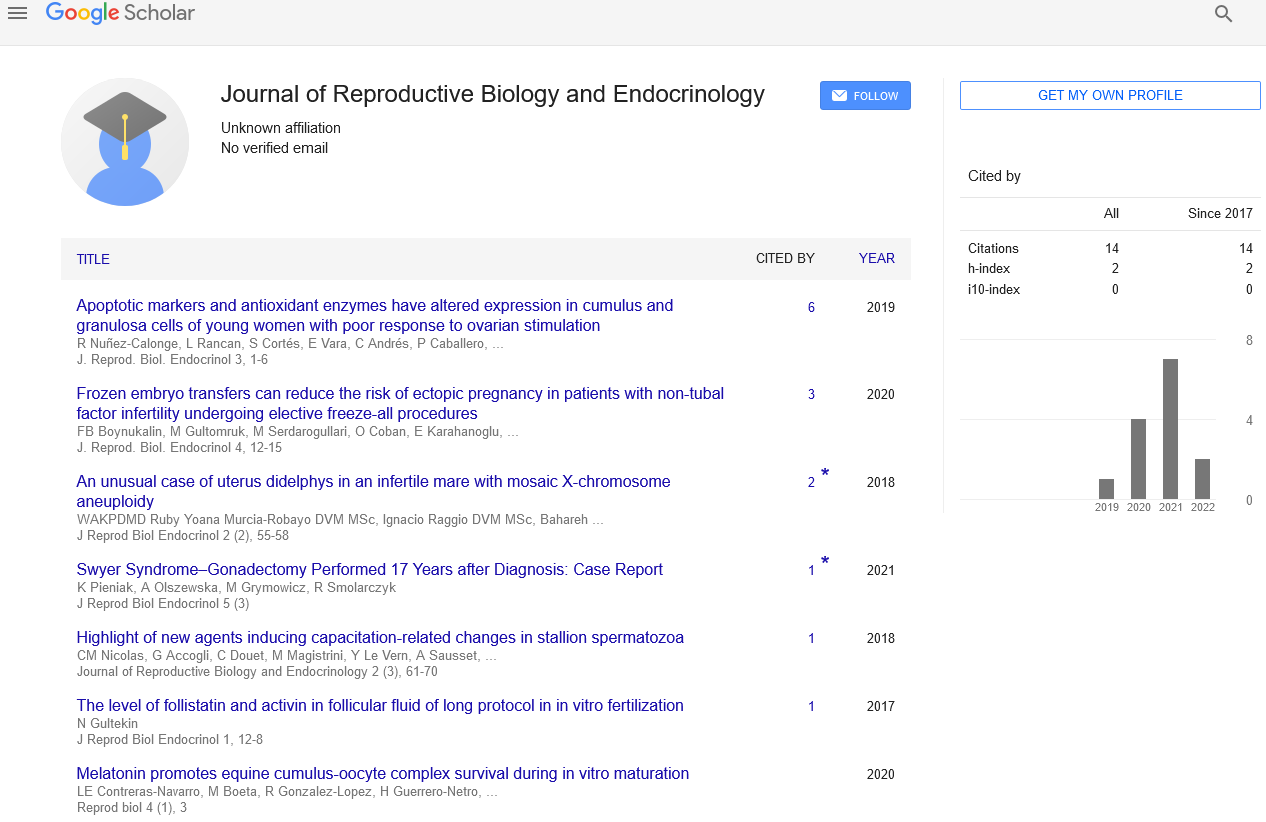Embryo cryopreservation: method, pregnancy outcome and determinants
Received: 02-Jul-2021 Accepted Date: Jul 16, 2021; Published: 23-Jul-2021
Citation: Yuv Z. Embryo cryopreservation: method, pregnancy outcome and determinants. J Reprod Biol Endocrinol. 2021;5(4):1
This open-access article is distributed under the terms of the Creative Commons Attribution Non-Commercial License (CC BY-NC) (http://creativecommons.org/licenses/by-nc/4.0/), which permits reuse, distribution and reproduction of the article, provided that the original work is properly cited and the reuse is restricted to noncommercial purposes. For commercial reuse, contact reprints@pulsus.com
Commentary
Cryopreservation of embryos is the method of protecting an fetus at subzero temperatures, by and large at an embryogenesis stage corresponding to pre-implantation, that’s from preparation to the blastocyst organize.
Embryo cryopreservation is valuable for remaining embryos after a cycle of in vitro treatment, as patients who fall flat to conceive may gotten to be pregnant utilizing such embryos without having to go through a full IVF cycle. Or, in the event that pregnancy happened, they might return afterward for another pregnancy. Save oocytes or embryos coming about from ripeness medicines may be utilized for oocyte gift or fetus gift to another lady or couple, and embryos may be made, solidified and put away particularly for exchange and gift by utilizing benefactor eggs and sperm.
Method
Embryo cryopreservation is for the most part performed as a component of in vitro fertilization (which by and large moreover incorporates ovarian hyperstimulation, egg recovery and developing life exchange). The ovarian hyperstimulation is ideally done by employing a GnRH agonist instead of human chorionic gonadotrophin (hCG) for last oocyte development, since it diminishes the hazard of ovarian hyperstimulation disorder with no prove of a contrast in live birth rate (in differentiate to fresh cycles where utilization of GnRH agonist encompasses a lower live birth rate) [1].
The most procedures utilized for fetus cryopreservation are vitrification versus moderate programmable solidifying (SPF). Considers demonstrate that vitrification is predominant or rise to to SPF in terms of survival and implantation rates [2]. Vitrification shows up to result in diminished chance of DNA harm than moderate solidifying [3].
Coordinate Frozen Developing life Exchange: Embryos can be solidified by SPF in ethylene glycol solidify media and exchange straightforwardly to beneficiaries promptly after water defrosting without research facility defrosting prepare.
PREGNANCY OUTCOME AND DETERMINANTS
In current state of the craftsmanship, early embryos having experienced cryopreservation embed at the same rate as proportionate new counterparts [2,3]. The result from utilizing cryopreserved embryos has consistently been positive with no increment in birth abandons or advancement abnormalities, too between new versus solidified eggs utilized for intracytoplasmic sperm infusion (ICSI). In reality, pregnancy rates are expanded taking after solidified fetus exchange, and perinatal results are less influenced, compared to developing life exchange within the same cycle as ovarian hyperstimulation was performed. The endometrium is accepted to not be ideally arranged for implantation following ovarian hyperstimulation, and thus solidified developing life exchange profits for a isolated cycle to centre on optimizing the chances of effective implantation. Children born from vitrified blastocysts have altogether higher birthweight than those born from non-frozen blastocysts. For early cleavage embryos, solidified ones show up to have at slightest as great obstetric result, measured as preterm birth and moo birthweight for children born after cryopreservation as compared with children born after new cycles.
Oocyte age, survival extent, and number of exchanged embryos are indicators of pregnancy result.
regnancies have been detailed from embryos put away for 27 years. A consider of more than 11,000 cryopreserved human embryos appeared no noteworthy impact of capacity time on post-thaw survival for IVF or oocyte gift cycles, or for embryos solidified at the pronuclear or cleavage stages. In expansion, the length of capacity had no noteworthy impact on clinical pregnancy, unsuccessful labor, implantation, or live birth rate, whether from IVF or oocyte gift cycles.
REFERENCES
- 1. Edgar DH, Gook A. A critical appraisal of cryopreservation (slow cooling versus vitrification) of human oocytes and embryos. Hum Reprod Update. 2017;18(5):536-54.
- 2. Kopeika J, Thornhill A, Khalaf Y. The effect of cryopreservation on the genome of gametes and embryos: principles of cryobiology and critical appraisal of the evidence. Hum Reprod Update. 2014; 21(2):209-27.
- 3. Wennerholm UB, Soderstrom A, Anttila V, et al. Children born after cryopreservation of embryos or oocytes: A systematic review of outcome data. Hum Reprod Update. 2019;24(9):2158-72.





